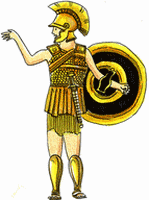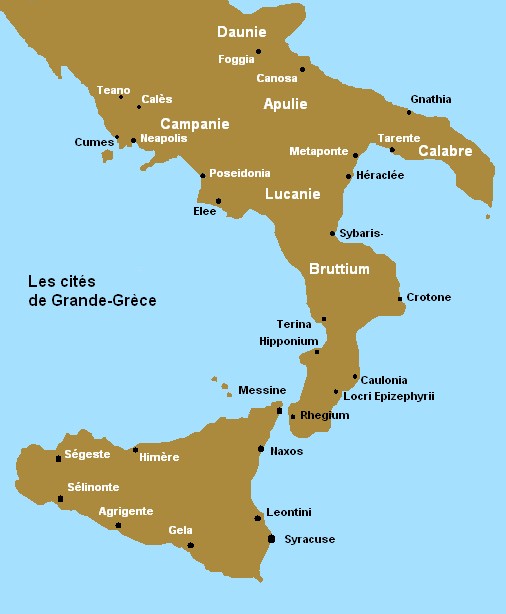Maps of the Antique
Mediterranean Sea
 Greece Greece
 Attic Attic
 Corinth Corinth
 Magna Graecia Magna Graecia
 Overview Overview
 Archaeological sites Archaeological sites
 Apulia Apulia
 Daunia Daunia
 Gnathia Gnathia
 Campania Campania

|
MAGNA GRAECIA

|
From the 8th century to the 5th century B.C., populations from the greek cities moved to the western parts of the Mediterranean sea, creating a large movement of colonization. With these settlements appeared new centres of Greek culture in Sicily and Southern Italy, and first of all in Campania.
Cumes, founded in 750-740 B.C. is thus sometimes seen as the oldest Greek colony in western Europe. The largest production of red-figure vases occur at the 5th and 4th century B.C., mainly with small pieces, but also hydria and bell-craters. The most popular shape is the one-handled amphora. The light-brown clay from Campania turns to a pinkish or red color after firing. These colonies settle down with all that composes a Greek city, including the artists, on a large territory known today as Magna Graecia. A prolific artistic period starts at the end of the 5th century B.C., mainly because by this time, Athens - which dominated the trade of ceramics - decline suddently after the Peloponnesian War.
|
|
Attic painters and potters expatriate to Italy and set up workshops there. The technique used by these painters is predominantly red-figure, but also the so-called "style of Gnathia" – named after the ancient name of the town Egnazia, on the Adriatic coast of Apulia. The shapes of the vases are inherited from the Athenian ceramics. Moreover, a massive use of highlights using added colors - mostly red and white but also blue and green - punctuate the composition.
|
|

















